 |
by Rhiannon Williams on (#6MTKR)
This is today's edition ofThe Download,our weekday newsletter that provides a daily dose of what's going on in the world of technology. Google's Astra is its first AI-for-everything agent What's happening: Google is set to launch a new system called Astra later this year. It promises that it will be the most powerful, advanced type...
|
MIT Technology Review
| Link | https://www.technologyreview.com/ |
| Feed | https://www.technologyreview.com/stories.rss |
| Updated | 2025-12-18 20:47 |
 |
by Zeyi Yang on (#6MTHC)
This story first appeared in China Report, MIT Technology Review's newsletter about technology in China.Sign upto receive it in your inbox every Tuesday. We finally know the result of a legal case I've been tracking in Hong Kong for almost a year. Last week, the Hong Kong Court of Appeal granted an injunction that permits...
|
 |
by Timothy Maher on (#6MTHD)
MIT Technology Review is celebrating our 125th anniversary with an online series that draws lessons for the future from our past coverage of technology. Do we use technology, or does it use us? Do our gadgets improve our lives or just make us weak, lazy, and dumb? These are old questions-maybe older than you think....
|
 |
by Melissa Heikkilä on (#6MT01)
Google is set to introduce a new system called Astra later this year and promises that it will be the most powerful, advanced type of AI assistant it's ever launched. The current generation of AI assistants, such as ChatGPT, can retrieve information and offer answers, but that is about it. But this year, Google is...
|
 |
by Rhiannon Williams on (#6MSP9)
This is today's edition ofThe Download,our weekday newsletter that provides a daily dose of what's going on in the world of technology. OpenAI's new GPT-4o lets people interact using voice or video in the same model The news: OpenAI just debuted GPT-4o, a new kind of AI model that you can communicate with in real...
|
 |
by Melissa Heikkilä on (#6MSM6)
This story originally appeared in The Algorithm, our weekly newsletter on AI. To get stories like this in your inbox first, sign up here. In the world of AI, a lot can happen in a year. Last year, at the beginning of Big Tech's AI wars, Google announced during its annual I/O conference that it...
|
 |
by James O'Donnell on (#6MS37)
OpenAI just debuted GPT-4o, a new kind of AI model that you can communicate with in real time via live voice conversation, video streams from your phone, and text. The model is rolling out over the next few weeks and will be free for all users through both the GPT app and the web interface,...
|
 |
by Rhiannon Williams on (#6MRQ5)
This is today's edition ofThe Download,our weekday newsletter that provides a daily dose of what's going on in the world of technology. What's next in chips Thanks to the boom in artificial intelligence, the world of chips is on the cusp of a huge tidal shift. There is heightened demand for chips that can train...
|
 |
by James O'Donnell on (#6MRK0)
MIT Technology Review's What's Next series looks across industries, trends, and technologies to give you a first look at the future. You can read the rest of themhere. Thanks to the boom in artificial intelligence, the world of chips is on the cusp of a huge tidal shift. There is heightened demand for chips that...
|
 |
by Eric Schmidt on (#6MRK1)
The global race for computational power is well underway, fueled by a worldwide boom in artificial intelligence. OpenAI's Sam Altman is seeking to raise as much as $7 trillion for a chipmaking venture. Tech giants like Microsoft and Amazon are building AI chips of their own. The need for more computing horsepower to train and...
|
 |
by Rhiannon Williams on (#6MQ4H)
A wave of AI systems have deceived" humans in ways they haven't been explicitly trained to do, by offering up untrue explanations for their behavior or concealing the truth from human users and misleading them to achieve a strategic end. This issue highlights how difficult artificial intelligence is to control and the unpredictable ways in...
|
 |
by William Fitzgerald on (#6MQ1J)
It's a hell of a time to have a conscience if you work in tech. The ongoing Israeli assault on Gaza has brought the stakes of Silicon Valley's military contracts into stark relief. Meanwhile, corporate leadership has embraced a no-politics-in-the-workplace policy enforced at the point of the knife. Workers are caught in the middle. Do...
|
 |
by Rhiannon Williams on (#6MPZH)
This is today's edition ofThe Download,our weekday newsletter that provides a daily dose of what's going on in the world of technology. Google helped make an exquisitely detailed map of a tiny piece of the human brain The news: A team led by scientists from Harvard and Google has created a 3D, nanoscale-resolution map of...
|
 |
by Cassandra Willyard on (#6MPXC)
This article first appeared in The Checkup,MIT Technology Review'sweekly biotech newsletter. To receive it in your inbox every Thursday, and read articles like this first,sign up here. The human brain is an engineering marvel: 86 billion neurons form some 100 trillion connections to create a network so complex that it is, ironically, mind boggling. This...
|
 |
by Zeyi Yang on (#6MPQ3)
It wasn't exactly surprising when on Wednesday, May 8, a Hong Kong appeals court sided with the city government to take down Glory to Hong Kong" from the internet. The trial, in which no one represented the defense, was the culmination of a years-long battle over a song that has become the unofficial anthem for...
|
 |
by Cassandra Willyard on (#6MPEQ)
A team led by scientists from Harvard and Google has created a 3D, nanoscale-resolution map of a single cubic millimeter of the human brain. Although the map covers just a fraction of the organ-a whole brain is a million times larger-that piece contains roughly 57,000 cells, about 230 millimeters of blood vessels, and nearly 150...
|
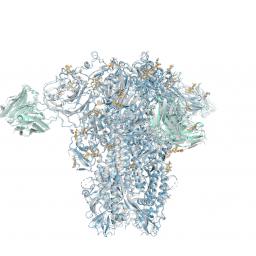 |
by Rhiannon Williams on (#6MP5Y)
This is today's edition ofThe Download,our weekday newsletter that provides a daily dose of what's going on in the world of technology. Google DeepMind's new AlphaFold can model a much larger slice of biological life What's new: Google DeepMind has released an improved version of its biology prediction tool, AlphaFold, that can predict the structures...
|
 |
by Casey Crownhart on (#6MP1J)
This article is from The Spark, MIT Technology Review's weekly climate newsletter. To receive it in your inbox every Wednesday, sign up here. Tesla, the world's largest EV maker, laid off its entire charging team last week. The timing of this move is absolutely baffling. We desperately need many more EV chargers to come online...
|
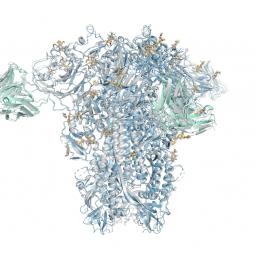 |
by James O'Donnell on (#6MNFV)
Google DeepMind has released an improved version of its biology prediction tool, AlphaFold, that can predict the structures not only of proteins but of nearly all the elements of biological life. It's a development that could help accelerate drug discovery and other scientific research. The tool is currently being used to experiment with identifying everything...
|
 |
by Cynthia Stoddard on (#6MNCC)
Though generative AI is still a nascent technology, it is already being adopted by teams across companies to unleash new levels of productivity and creativity.Marketers are deploying generative AI to create personalized customer journeys.Designers are using the technology to boost brainstorming and iterate between different content layouts more quickly. The future of technology is exciting,...
|
 |
by MIT Technology Review Insights on (#6MNCD)
Multimodality is a relatively new term for something extremely old: how people have learned about the world since humanity appeared. Individuals receive information from myriad sources via their senses, including sight, sound, and touch. Human brains combine these different modes of data into a highly nuanced, holistic picture of reality. Communication between humans is multimodal,"...
|
 |
by Rhiannon Williams on (#6MN9E)
This is today's edition ofThe Download,our weekday newsletter that provides a daily dose of what's going on in the world of technology. Deepfakes of your dead loved ones are a booming Chinese business Once a week, Sun Kai has a video call with his mother, and they discuss his day-to-day life. But Sun's mother died...
|
 |
by Zeyi Yang on (#6MN79)
This story first appeared in China Report, MIT Technology Review's newsletter about technology in China.Sign upto receive it in your inbox every Tuesday. If you could talk again to someone you love who has passed away, would you? For a long time, this has been a hypothetical question. No longer. Deepfake technologies have evolved to...
|
 |
by Rhiannon Williams on (#6MMJ3)
Sperm whales are fascinating creatures. They possess the biggest brain of any species, six times larger than a human's, which scientists believe may have evolved to support intelligent, rational behavior. They're highly social, capable of making decisions as a group, and they exhibit complex foraging behavior. But there's also a lot we don't know about...
|
 |
by Zeyi Yang on (#6MMEF)
Once a week, Sun Kai has a video call with his mother. He opens up about work, the pressures he faces as a middle-aged man, and thoughts that he doesn't even discuss with his wife. His mother will occasionally make a comment, like telling him to take care of himself-he's her only child. But mostly,...
|
 |
by James Temple on (#6MMEG)
Fixing our collective meat problem is one of the trickiest challenges in addressing climate change-and for some baffling reason, the world seems intent on making the task even harder. The latest example occurred last week, when Florida governor Ron DeSantis signed a law banning the production, sale, and transportation of cultured meat across the Sunshine...
|
 |
by Rhiannon Williams on (#6MMB9)
This is today's edition ofThe Download,our weekday newsletter that provides a daily dose of what's going on in the world of technology. Scientists are trying to get cows pregnant with synthetic embryos About a decade ago, biologists started to observe that stem cells, left alone in a walled plastic container, will spontaneously self-assemble and try...
|
 |
by Antonio Regalado on (#6MKBG)
It was a cool morning at the beef teaching unit in Gainesville, Florida, and cow number #307 was bucking in her metal cradle as the arm of a student perched on a stool disappeared into her cervix. The arm held a squirt bottle of water. Seven other animals stood nearby behind a railing; it would...
|
 |
by Rhiannon Williams on (#6MHRD)
This is today's edition ofThe Download,our weekday newsletter that provides a daily dose of what's going on in the world of technology. Cancer vaccines are having a renaissance Last week, Moderna and Merck launched a large clinical trial in the UK of a promising new cancer therapy: a personalized vaccine that targets a specific set...
|
 |
by Cassandra Willyard on (#6MHPK)
This article first appeared in The Checkup,MIT Technology Review'sweekly biotech newsletter. To receive it in your inbox every Thursday, and read articles like this first,sign up here. Last week, Moderna and Merck launched a large clinical trial in the UK of a promising new cancer therapy: a personalized vaccine that targets a specific set of...
|
 |
by Rhiannon Williams on (#6MGVV)
This is today's edition ofThe Download,our weekday newsletter that provides a daily dose of what's going on in the world of technology. Sam Altman says helpful agents are poised to become AI's killer function Sam Altman, CEO of OpenAI, has a vision for how AI tools will become enmeshed in our daily lives. During a...
|
 |
by Casey Crownhart on (#6MGSB)
This article is from The Spark, MIT Technology Review's weekly climate newsletter. To receive it in your inbox every Wednesday, sign up here. Batteries are on my mind this week. (Aren't they always?) But I've got two extra reasons to be thinking about them today. First, there's a new special report from the International Energy...
|
 |
by James Temple on (#6MGEY)
Eliminating carbon pollution from aviation is one of the most challenging parts of the climate puzzle, simply because large commercial airlines are too heavy and need too much power during takeoff for today's batteries to do the job. But one way that companies and governments are striving to make some progress is through the use...
|
 |
by James O'Donnell on (#6MGC6)
A number of moments from my brief sit-down with Sam Altman brought the OpenAI CEO's worldview into clearer focus. The first was when he pointed to my iPhone SE (the one with the home button that's mostly hated) and said, That's the best iPhone." More revealing, though, was the vision he sketched for how AI...
|
 |
by Rhiannon Williams on (#6MG0M)
This is today's edition ofThe Download,our weekday newsletter that provides a daily dose of what's going on in the world of technology. Inside the quest to map the universe with mysterious bursts of radio energy When our universe was less than half as old as it is today, a burst of energy that could cook...
|
 |
by Zeyi Yang on (#6MFYS)
This story first appeared in China Report, MIT Technology Review's newsletter about technology in China.Sign upto receive it in your inbox every Tuesday. Allow me to indulge in a little reflection this week. Last week, the divest-or-ban TikTok bill was passed in Congress and signed into law. Four years ago, when I was just starting...
|
 |
by Anna Kramer on (#6MFWS)
When our universe was less than half as old as it is today, a burst of energy that could cook a sun's worth of popcorn shot out from somewhere amid a compact group of galaxies. Some 8 billion years later, radio waves from that burst reached Earth and were captured by a sophisticated low-frequency radio...
|
 |
by MIT Technology Review on (#6MFCE)
Recorded on April 30, 2024 Inside the Next Era of AI and Hardware Speakers: James O'Donnell, AI reporter, and Charlotte Jee, News editor Hear first-hand from our AI reporter, James O'Donnell, as he walks our news editor Charlotte Jee through the latest goings-on in his beat, from rapid advances in robotics to autonomous military drones,...
|
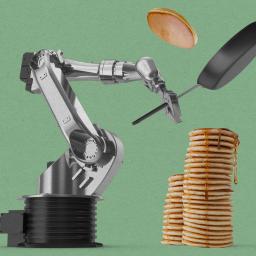 |
by Rhiannon Williams on (#6MF3A)
This is today's edition ofThe Download,our weekday newsletter that provides a daily dose of what's going on in the world of technology. The robot race is fueling a fight for training data We're interacting with AI tools more directly-and regularly-than ever before. Interacting with robots, by way of contrast, is still a rarity for most....
|
 |
by Melissa Heikkilä on (#6MEZ2)
This story originally appeared in The Algorithm, our weekly newsletter on AI. To get stories like this in your inbox first, sign up here. Deepfakes are getting good. Like, really good. Earlier this month I went to a studio in East London to get myself digitally cloned by the AI video startup Synthesia. They made...
|
 |
by James O'Donnell on (#6MEZ3)
Since ChatGPT was released, we now interact with AI tools more directly-and regularly-than ever before. But interacting with robots, by way of contrast, is still a rarity for most. If you don't undergo complex surgery or work in logistics, the most advanced robot you encounter in your daily life might still be a vacuum cleaner...
|
 |
by Rhiannon Williams on (#6ME47)
This is today's edition ofThe Download,our weekday newsletter that provides a daily dose of what's going on in the world of technology. Here's the defense tech at the center of US aid to Israel, Ukraine, and Taiwan After weeks of drawn-out congressional debate over how much the United States should spend on conflicts abroad, President...
|
 |
by James O'Donnell on (#6MCB0)
MIT Technology Review Explains: Let our writers untangle the complex, messy world of technology to help you understand what's coming next.You can read more from the series here. After weeks of drawn-out congressional debate over how much the United States should spend on conflicts abroad, President Joe Biden signed a $95.3 billion aid package into...
|
by Rhiannon Williams on (#6MC8C)
Chatbot answers are all made up. This new tool helps you figure out which ones to trust. The news: Large language models are famous for their ability to make things up-in fact, it's what they're best at. But their inability to tell fact from fiction has left many businesses wondering if using them is worth...
 |
by Antonio Regalado on (#6MC5V)
This article first appeared in The Checkup,MIT Technology Review'sweekly biotech newsletter. To receive it in your inbox every Thursday, and read articles like this first,sign up here. Six weeks ago, I pre-ordered the Firefly Petunia," a houseplant engineered with genes from bioluminescent fungi so that it glows in the dark. After years of writing about...
|
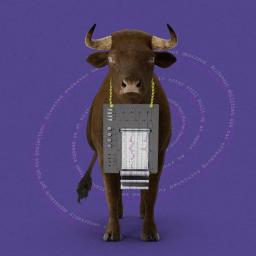 |
by Will Douglas Heaven on (#6MBC2)
Large language models are famous for their ability to make things up-in fact, it's what they're best at. But their inability to tell fact from fiction has left many businesses wondering if using them is worth the risk. A new tool created by Cleanlab, an AI startup spun out of a quantum computing lab at...
|
 |
by Rhiannon Williams on (#6MB98)
This is today's edition ofThe Download,our weekday newsletter that provides a daily dose of what's going on in the world of technology. An AI startup made a hyperrealistic deepfake of me that's so good it's scary Until now, AI-generated videos of people have tended to have some stiffness, glitchiness, or other unnatural elements that make...
|
 |
by Casey Crownhart on (#6MB99)
Political fights over mining and minerals are heating up, and there are growing environmental and sociological concerns about how to source the materials the world needs to build new energy technologies. But low-emissions energy sources, including wind, solar, and nuclear power, have a smaller mining footprint than coal and natural gas, according to a new...
|
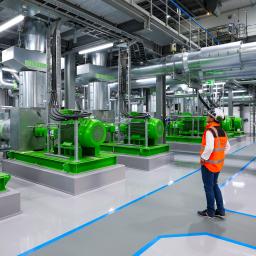 |
by Casey Crownhart on (#6MB6K)
This article is from The Spark, MIT Technology Review's weekly climate newsletter. To receive it in your inbox every Wednesday, sign up here. From toaster ovens that work as air fryers to hair dryers that can also curl your hair, single tools that do multiple jobs have an undeniable appeal. In the climate world, hydrogen...
|
 |
by Melissa Heikkilä on (#6MB21)
I'm stressed and running late, because what do you wear for the rest of eternity? This makes it sound like I'm dying, but it's the opposite. I am, in a way, about to live forever, thanks to the AI video startup Synthesia. For the past several years, the company has produced AI-generated avatars, but today...
|